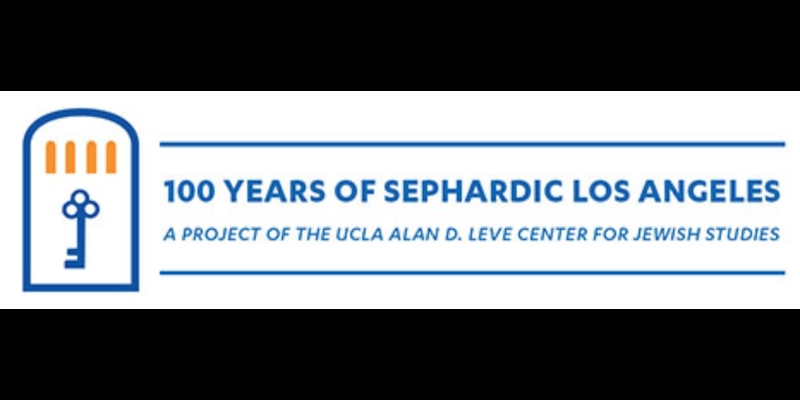100 Years of Sephardic Los Angeles is a project of the Alan D. Leve Center for Jewish Studies and the Sephardic Archive Initiative at UCLA, with the cooperation of UCLA Libraries and Special Collections. It aims to showcase the vibrancy of Sephardic culture in Los Angeles and to shed light on its diversity past and present.
But what and who is Sephardic? What role does Los Angeles play in this story? And how have these two cultural forces—one Jewish, Mediterranean, and Middle Eastern, the other the global crossroads of Southern Californian—shaped one another?
“Sephardic” is framed here in its broadest possible terms, inclusive of communities that don’t always claim the title for themselves. The online exhibition explores the intersecting migratory, cultural, and urban histories of Jews from across the Mediterranean and Middle East, from Iraq and Iran to North Africa and Ottoman Anatolia and the Balkans (as well as the post-Ottoman states of Turkey, Greece, Yugoslavia, British Mandate Palestine, Israel, Syria, and more), and beyond.
Subject Period (epoch)
Subject Continent(s)
Subject Country(ies)
Subject City(ies)
Topic(s)
Project Language(s)
Project Media
Project Access
Project Status
Project Creator Continent(s)
Project Creator Country(ies)
Project Creator City(ies)


100 Years of Sephardic Los Angeles is a project of the Alan D. Leve Center for Jewish Studies and the Sephardic Archive Initiative at UCLA, with the cooperation of UCLA Libraries and Special Collections. It aims to showcase the vibrancy of Sephardic culture in Los Angeles and to shed light on its diversity past and present.
But what and who is Sephardic? What role does Los Angeles play in this story? And how have these two cultural forces—one Jewish, Mediterranean, and Middle Eastern, the other the global crossroads of Southern Californian—shaped one another?
“Sephardic” is framed here in its broadest possible terms, inclusive of communities that don’t always claim the title for themselves. The online exhibition explores the intersecting migratory, cultural, and urban histories of Jews from across the Mediterranean and Middle East, from Iraq and Iran to North Africa and Ottoman Anatolia and the Balkans (as well as the post-Ottoman states of Turkey, Greece, Yugoslavia, British Mandate Palestine, Israel, Syria, and more), and beyond.
